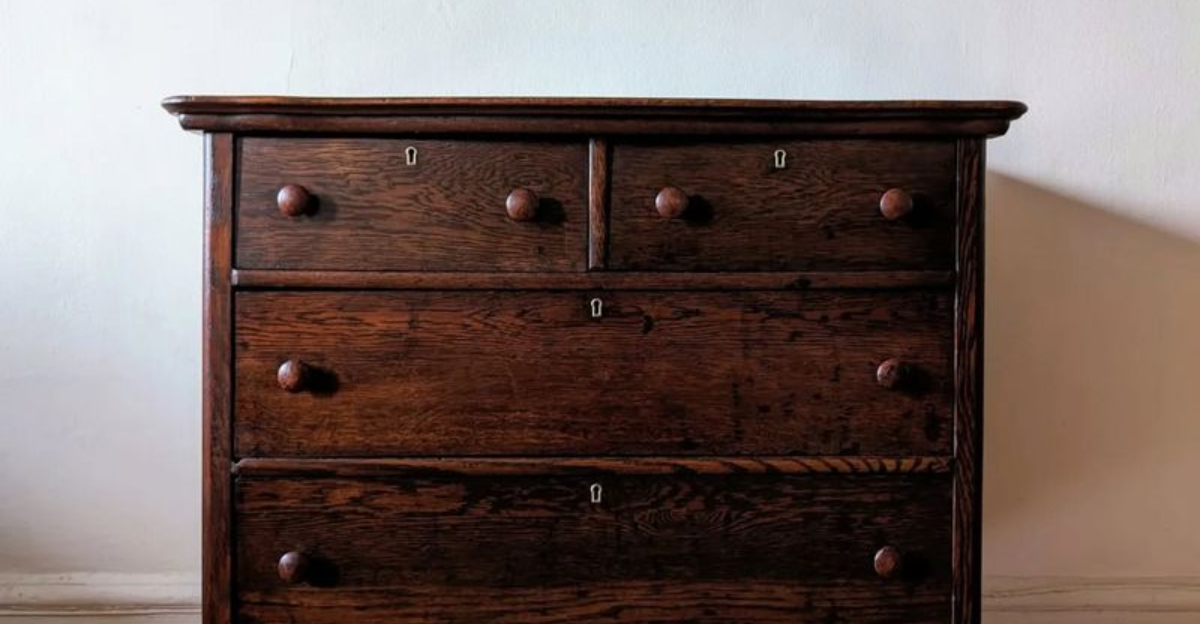Hunting for secondhand furniture can feel like panning for gold in a river of particle board and mystery stains. When done right, you’ll score beautiful pieces with character and craftsmanship at bargain prices.
But one wrong move and you’re hauling home bedbugs, hidden damage, or furniture that’ll collapse faster than your plans to assemble it sober.
1. Solid Wood Construction Speaks Volumes
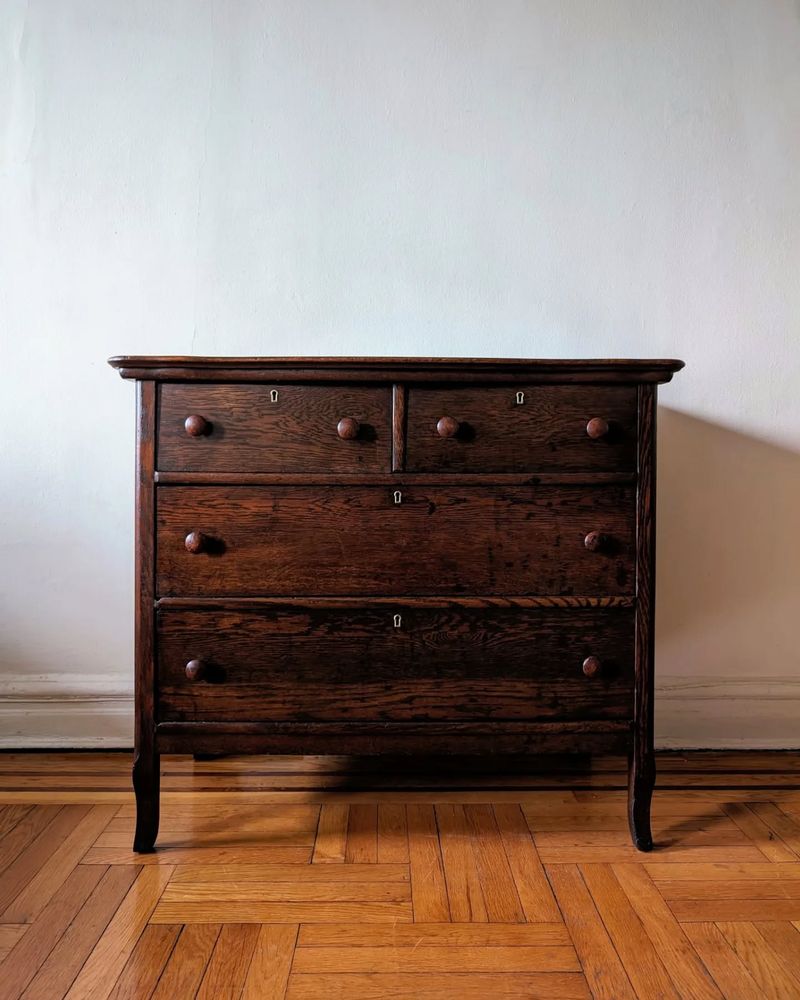
Real wood furniture weighs like your guilt after eating an entire pizza. If it takes two people and some creative cursing to move, that’s a good sign! Solid pieces have satisfying heft and substantial feel.
Knock on the surface – hollow sounds suggest cheaper materials hiding underneath. Genuine wood furniture can last generations, while particleboard relatives fall apart during their first apartment move.
2. Dovetail Joints: Craftsmanship’s Signature
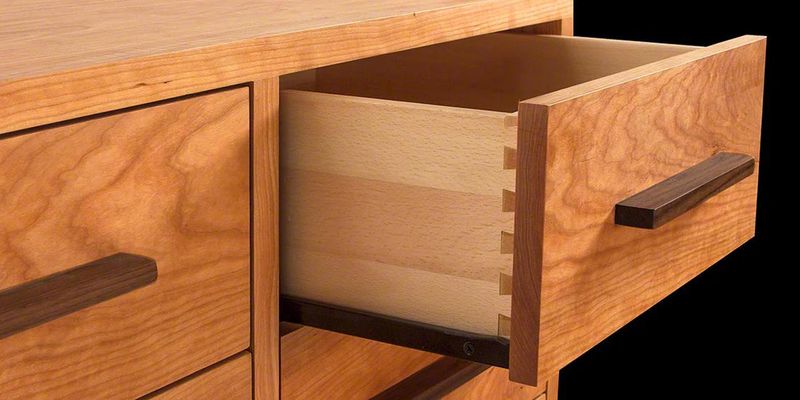
Those interlocking triangular joints where drawers meet aren’t just pretty – they’re the furniture equivalent of a secret handshake among quality pieces. Dovetails signify hand-craftsmanship and attention to detail that mass production simply can’t match.
Pull out drawers completely and look at corners. Machine-cut dovetails are precise; hand-cut ones show slight irregularities but incredible strength. Either way, they’ve already survived decades and will outlive most relationships.
3. Hardwood Frames Under Upholstery
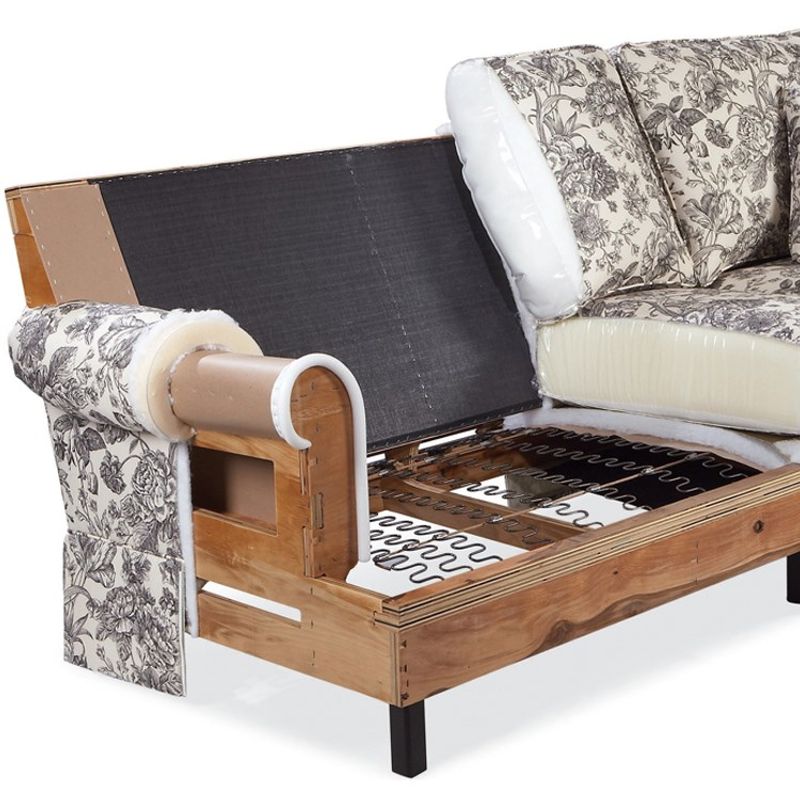
Flip that sofa over like you’re checking for a price tag at a yard sale. Quality upholstered pieces hide hardwood frames underneath – oak, maple, or walnut that laugh at the passage of time.
Look for corner blocks, reinforced joints, and screws rather than just staples. Springs should be tight and evenly spaced. The underside tells the truth about construction that pretty fabric tries to hide, like makeup on a bad hangover.
4. Original Hardware Tells a Story
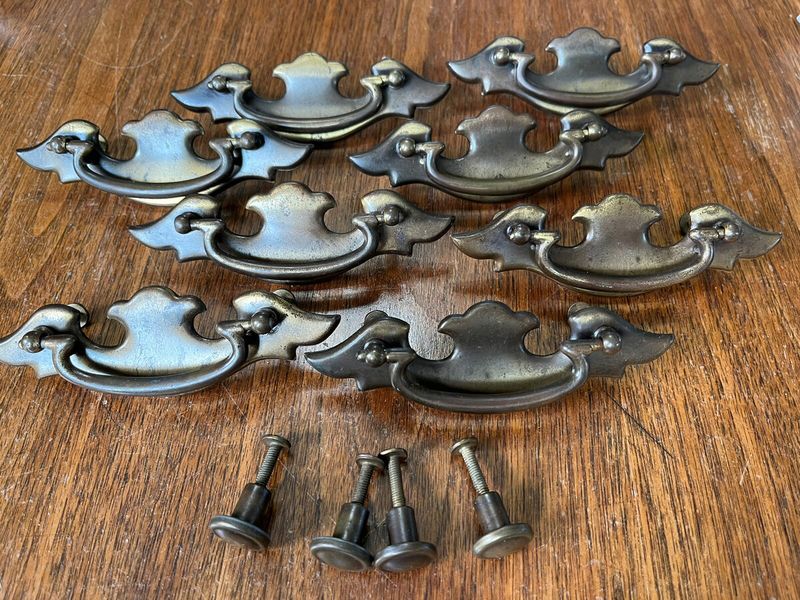
Brass pulls that have darkened with age, hand-forged hinges, or decorative key escutcheons are like jewelry for furniture – and they’re often impossible to replicate today. Original hardware suggests the piece hasn’t been heavily modified or “restored” by amateur hands.
Mismatched or replacement hardware isn’t necessarily a dealbreaker, but matching vintage sets add authenticity and value to your secondhand score.
5. Smooth-Gliding Drawers Without Drama

Quality drawers operate like butter on a hot pan – smooth, consistent, and without the theatrical soundtrack. Pull each drawer fully out and check for wooden glide mechanisms rather than cheap metal tracks.
The back of the drawer should be properly fitted, not flimsy cardboard or thin plywood. Smell inside – a pleasant wood scent is good; musty odors mean potential moisture damage. Drawers that stick, wobble, or require wrestling matches indicate repair needs.
6. Matching Wood Grain Patterns

Furniture makers who cared about their craft didn’t randomly slap wood pieces together. They carefully matched grain patterns across drawers and panels, creating visual harmony that cheap furniture ignores.
Veneered furniture isn’t automatically inferior – fine antiques often use veneer artistically. The key is consistent patterns and thoughtful placement that shows someone was paying attention during creation, not rushing to meet production quotas.
7. Properly Finished Backs and Undersides
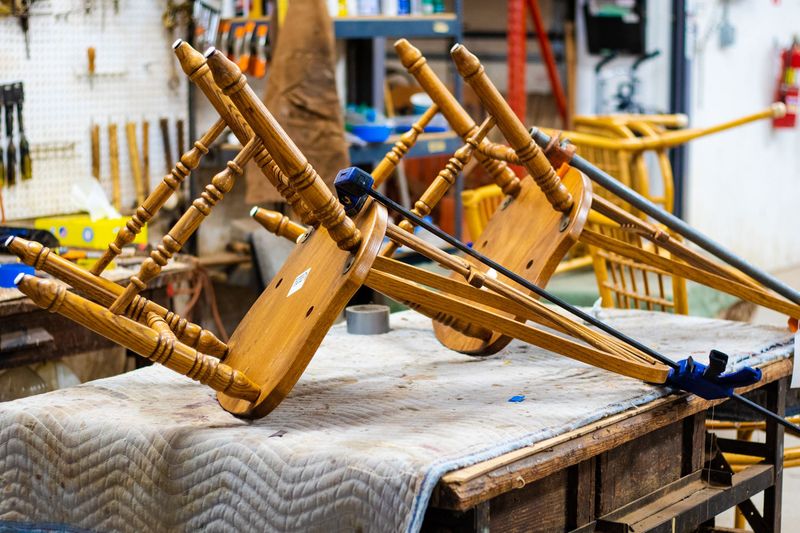
Flip that fancy dresser over like you’re checking for a label at TJ Maxx. Quality furniture doesn’t cut corners – even the parts nobody sees get proper attention.
The back should be fully finished, not raw or covered with cheap material. Undersides of tables should be sanded smooth. This attention to invisible details reveals the maker’s integrity. When manufacturers invest time in areas nobody sees, they definitely didn’t skimp on the parts everyone does.
8. Minimal Repairs Over Its Lifetime
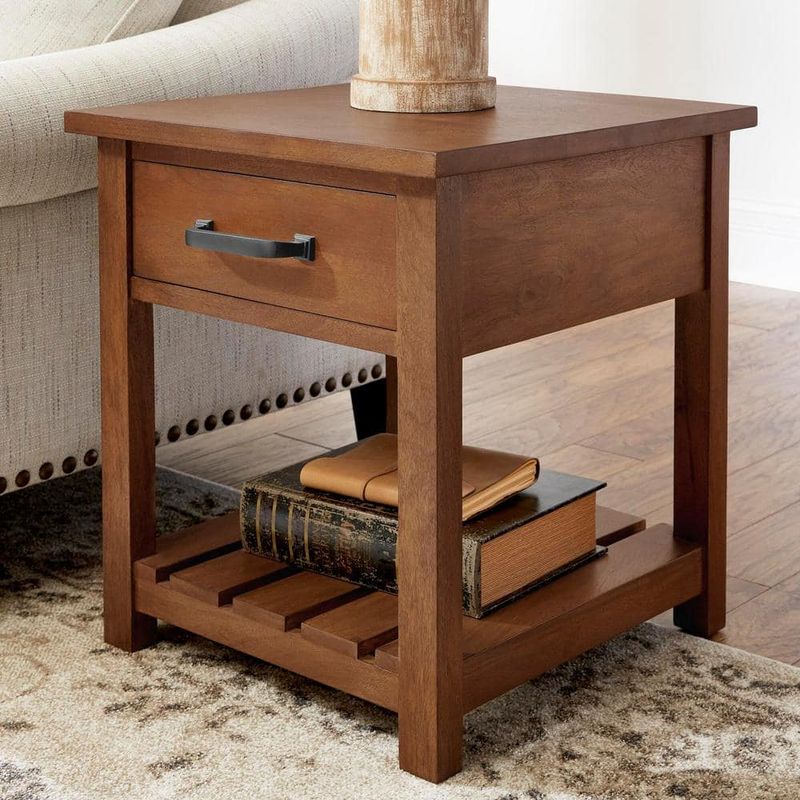
Some battle scars add character, but furniture shouldn’t look like it survived a war zone. Quality pieces may show gentle aging – slight color changes, minor scratches, or subtle wear patterns where hands have touched for decades.
Beware multiple repair attempts, mismatched wood plugs, or areas that have been heavily refinished. The best secondhand finds have aged gracefully with minimal intervention, like Helen Mirren but in coffee table form. Their quality construction meant fewer emergency repairs were needed.
9. The Dreaded Particle Board Nightmare
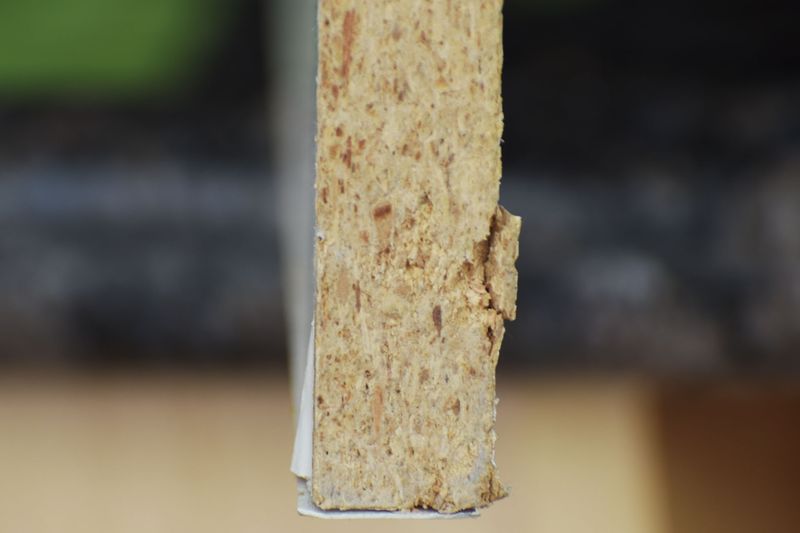
If it weighs less than your weekend grocery haul, run away! Particle board furniture is essentially sawdust and glue pressed together with good intentions and bad results.
These pieces literally disintegrate when exposed to moisture. Edges chip easily, revealing the compressed material inside. Once damaged, they’re nearly impossible to repair properly. Even worse, they often off-gas chemicals into your home while slowly collapsing under the weight of your TV remote.
10. Water Damage: The Silent Furniture Killer

Water rings might be fashionable on coasters, not on your potential furniture purchase. Check undersides, drawer bottoms, and legs for telltale discoloration, swelling, or warping that whispers tales of floods and forgotten drink spills.
Wood that’s been water-damaged never quite recovers its structural integrity. What looks like minor cosmetic issues often hides deeper problems. Sniff suspicious areas – musty odors suggest mold might be lurking below surfaces, waiting to colonize your home.
11. Upholstery That Smells Like Historical Events
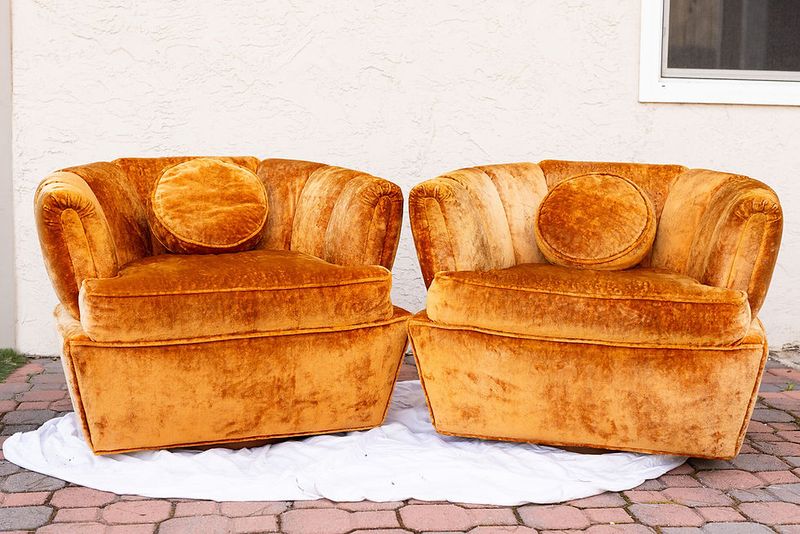
That distinctive vintage aroma isn’t charming – it’s embedded decades of other people’s lives that you’re about to bring home. Fabric holds odors like teenagers hold grudges: permanently and with surprising intensity.
Cigarette smoke, pet accidents, and mysterious food spills become one with the fibers. Even professional cleaning often can’t fully extract these olfactory ghosts. Unless you’re prepared for complete reupholstering, walk away from pieces that make your nose wrinkle upon approach.
12. Wobbly Legs: Furniture’s Death Rattle
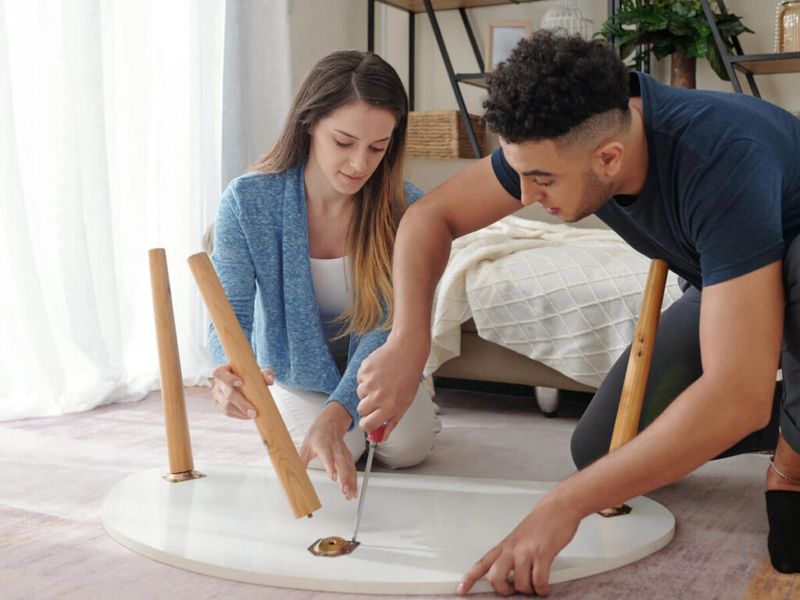
Furniture should stand firmly, not dance when you bump it. Wiggle every piece gently – quality furniture remains stable while poorly made or damaged pieces perform the shimmy.
Check where legs join the frame. Loose joints, visible gaps, or previous repair attempts with glue oozing out suggest structural problems. Tightening screws might fix minor issues, but major wobbles indicate the furniture equivalent of terminal illness. Save yourself future heartbreak and keep shopping.
13. Veneer Peeling Like Sunburned Skin

Veneer isn’t inherently evil – many magnificent antiques use it masterfully. The problem is when it starts separating from its base layer, curling up like crispy bacon edges.
Run your fingers along edges and corners where problems typically start. Once veneer begins detaching, it’s nearly impossible to reattach perfectly. Check for missing chunks or amateur repair attempts using regular wood glue. Quality veneer work should have survived decades without bubbling or separation.
14. Mysterious Stains With Backstories You Don’t Want

Some furniture has seen things. Dark patches on mattresses, cushions, or wooden surfaces tell stories that should remain untold. Mystery stains might be innocent coffee spills – or biological evidence from previous owners’ lives.
Wood stains can sometimes be refinished away, but fabric stains are forever roommates. Flip cushions and check undersides of upholstery. Bring a small UV flashlight if you’re brave (or foolish) enough to see what really lurks in those fibers.
15. Signs of Unwelcome Tenants (Bugs!)

Tiny holes, sawdust trails, or suspicious specks along seams aren’t charming character marks – they’re evidence of squatters who’ll gladly relocate to your home. Bedbugs, termites, and wood-boring beetles consider your secondhand find their personal condominium.
Inspect dark corners, undersides, and joints with a flashlight. Look for insect casings, eggs, or droppings. Even furniture that’s been treated may harbor survivors. No bargain is worth introducing an infestation that could cost thousands to eradicate.

